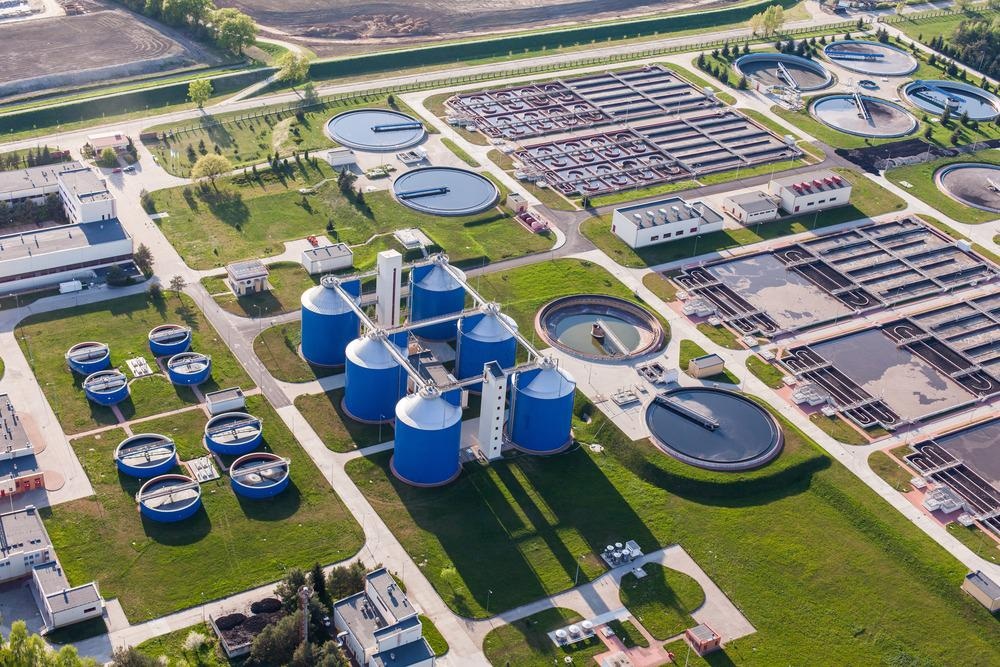The consumption and use of illegal and illicit drugs are increasing in many parts of the world, causing many social and environmental problems. Many of these social issues are often well known and documented, with most Governments employing strategies to try to deal with them. Many of the environmental issues resulting from drugs or their metabolites entering the environment are unknown and yet discovered. When the opportunity comes, assessing their impact and designing methods to alleviate them will be necessary.

Image Credit: UzFoto/Shutterstock.com
Drug use is usually studied using surveys and medical data carried out amongst users and their communities. However, these techniques are very susceptible to misinformation and sometimes focus on historical data rather than real-time. Medical data is only reliable for those who have attended a medical institution; many drug users remain undetected in the communities.
In most countries, human urine and excrement are collected and treated in central sewage treatment plants to remove harmful organisms and chemicals. In most countries, human urine and excrement are collected and treated in central sewage treatment plants to remove harmful organisms and chemicals. Among all the other waste, some will contain the metabolites and drug residues excreted by the drug users, which could be a potential data source.
Current Wastewater Drug Analysis Techniques
Utilizing modern analytical techniques metabolite concentration in water can be determined. These results can then be used to calculate the level of drug consumption within the past 24 hours and be extrapolated to estimate the number of users in a community. Automated sampling would enable the continuous collection of data and analysis, providing current insights into drug use.
Advances in analysis techniques have lowered the reliable LOD (Limits of Detection) to as little as 0.2 nanograms per liter and reliable LOQ (Limits of Quantification) to as low as 0.6 ng/liter for many drug metabolites. Some substances can even be detected as low as picograms per liter (10-12grams per liter).
Commonly, Liquid Chromatography combined with Mass Spectrometry (LC/MS) is used to analyze wastewaters for drug metabolites. Liquid Chromatography physically separates the liquid components, and Mass Spectrometry is used to analyze the individual parts. Contaminants may need to be adsorbed onto solid and can be isolated using SPE (Solid Pase Extraction) before LCMS.
Waste Based Epidemiology
Waste-based epidemiology (WBE) is an emerging science. In addition to testing for illicit drugs and their metabolites, it can study the prevalence of diseases such as COVID-19 by analyzing water for viruses. As a powerful forensic tool in drug use analysis, WBE can provide almost real-time data on drug consumption, either continuous or semi-continuous, making it very useful for scientists.
WBE can also be used to track disease prevalence, including using techniques such as centrifugation to remove viruses from the sample. Adsorption, lysis, and further DNA or RNA analysis are all specialized techniques that can be used after extraction.
The European Monitoring Centre for Drugs and Drug Addiction (EMCDDA) and the United Nations Office on Drugs and Crime (UNODC) have reported the complexities surrounding drug-related problems and their potential solutions. The market for psychoactive and stimulants is quite dynamic, with new synthetic products appearing regularly. Studies utilizing this technique have shown some interesting variations in drug use. For instance, In Washington State, the amount of cannabis in wastewater doubled after legalization.
Insights into how drug consumption varies between residential locations have been gained. For example, cocaine and ecstasy were found more commonly in urban areas than in rural areas in Oregon state. In contrast, in Finland, high levels of stimulants are found in city sewage in general.
Periodical variations in drug consumption have also been reported across different cities. Italy, Zagreb, and London differed in the type of drug consumed on the weekend compared to in the week. At the University of Puget Sound, Washington State, it was found that amphetamines in wastewater increased massively at exam time.
Governments and law enforcement agencies can use this kind of information to target their crime prevention strategies as well as determine social policies.
Effect of Substance Abuse on the Environment
Analysis of wastewater drug concentrations can also be used in environmental studies. If the range of pollutants can be quantified, then laboratory studies can investigate the realistic real-life concentrations of contaminants.
One such study looked at European eels exposed to drug levels in the environment. The eels were placed in tanks and exposed to levels of cocaine likely to be found in some rivers. Those exposed to trace levels of cocaine metabolites were hyperactive, with drug molecules accumulating in the brain, muscles, gills, and other organs. Disruption to their hormone balance was also reported. Despite a 10-day rest from exposure, the effects were not reversed.
It is most likely that their ability to swim 3,800 miles to their breeding grounds in the Sargasso seas would be significantly compromised by exposure to trace levels of drugs.
The presence of trace drug elements and pharmaceuticals is likely to affect predator and prey interactions. Research has shown that the presence of antidepressants and amphetamines can significantly change bacterial and algal communities in nature and affect insect growth cycles.
Drugs combined with heavy metals, pesticides, and antibiotics can have unknown effects on many species, so water testing to ascertain levels of these chemicals will be influential in setting the parameters for current and future studies.
The presence of legitimate drugs, such as antibiotics and pain relief, can also have significant environmental repercussions. The development of antibiotic-resistant bacteria is aided by the indiscriminate use of antibiotics in human and animal medicine.

Image Credit: Mariusz Szczygiel/Shutterstock.com
Waste Water Treatment Plant Design
The detection of illicit drugs in water will be vital in designing and monitoring wastewater treatment plants’ efficacy. Previous studies have suggested a 79% removal of drugs and metabolites in SBR WWTP (Sequenced Batch Reactor Waste Water Treatment Plant) and 47% removal in anoxic/oxic plants.
Up to 95% removal can be achieved using Ozone and Carbon filtration, but these are expensive processes adding capital and running costs to the water treatment plant. these are expensive processes adding capital and running costs to the water treatment plant. Ozone and Carbon filters can also remove many other contaminants, so including them in plant design could be beneficial.
Constructed wetlands (artificial ponds and reed beds) can also remove much contamination, providing many species with wetland habitats. The level of drugs removed and their effects in constructed wetlands are still being studied. The implication is that a significant amount of drug-related material will still be discharged to the environment even after treatment in a Waste Water Treatment Plant (WWTP).
The need to analyze waters for drugs and drug metabolites is increasing, focusing on where and when drugs are being used and what is being released into the environment. The need to analyze waters for drugs and drug metabolites is increasing, focusing on where and when drugs are being used and what is being released into the environment.
Insights gained from these investigations will help target law enforcement and improve drug treatment and prevention programs. The significant impact drug consumption has on the environment will also be highlighted, informing future strategies.
References and Further Reading
Angeles, L., Mullen, R., Huang, I., Wilson, C., Khunjar, W., Sirotkin, H., McElroy, A. and Aga, D., (2020). Assessing pharmaceutical removal and reduction in toxicity provided by advanced wastewater treatment systems. Environmental Science: Water Research & Technology, 6(1), pp.62-77. Available at: https://doi.org/10.1039/C9EW00559E
Bannwarth, A., Morelato, M., Benaglia, L., Been, F., Esseiva, P., Delemont, O. and Roux, C., (2019). The use of wastewater analysis in forensic intelligence: drug consumption comparison between Sydney and different European cities. Forensic Sciences Research, 4(2), pp.141-151. Available at: https://doi.org/10.1080/20961790.2018.1500082
Hürriyet Daily News. (2021). Water analysis sheds light on substance use - Turkey News. [online] Available at: https://www.hurriyetdailynews.com/water-analysis-sheds-light-on-substance-use-165688 [Accessed August 2021].
Sulej-Suchomska, A., Klupczynska, A., Dereziński, P., Matysiak, J., Przybyłowski, P. and Kokot, Z., (2020). Urban wastewater analysis as an effective tool for monitoring illegal drugs, including new psychoactive substances, in the Eastern European region. Scientific Reports, 10(1). Available at: https://doi.org/10.1038/s41598-020-61628-5
Emcdda.europa.eu. (2021). Wastewater analysis and drugs — a European multi-city study | www.emcdda.europa.eu. [online] Available at: https://www.emcdda.europa.eu/publications/html/pods/waste-water-analysis_en [Accessed August 2021].
Deng, Y., Guo, C., Zhang, H., Yin, X., Chen, L., Wu, D. and Xu, J., (2020). Occurrence and removal of illicit drugs in different wastewater treatment plants with different treatment techniques. Environmental Sciences Europe, 32(1). Available at: https://doi.org/10.1186/s12302-020-00304-x
Rapp Learn, J., (2018). Some Rivers Are So Drug-Polluted, Their Eels Get High on Cocaine. [online] National Geographic. Available at: https://www.nationalgeographic.com/science/article/european-eels-on-cocaine-polluted-rivers-science-environment-animals [Accessed August 2021].
Disclaimer: The views expressed here are those of the author expressed in their private capacity and do not necessarily represent the views of AZoM.com Limited T/A AZoNetwork the owner and operator of this website. This disclaimer forms part of the Terms and conditions of use of this website.